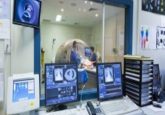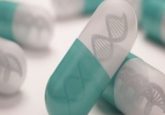Neuropathic cancer pain eliminated with gene therapy
Researchers from the University of Texas MD Anderson Cancer Center (Houston; TX, USA) have demonstrated that gene transfer of KCC2 into the spinal canal of rats restores calcium levels following nerve injury and can eliminate neuropathic pain.
The study, published in Cell Reports last week, could lead to the development of new gene therapy treatments for cancer patients, many of whom suffer neuropathic pain as a result of nerve damage caused by tumors, chemotherapy, radiotherapy and surgery.
Nerve injury has been shown previously to cause disruption to neuronal chloride concentrations. However, gene transfer of KCC2 into the spinal canal rectified this imbalance in rats. The researchers demonstrated that the restoration of chloride homeostasis led to a “complete and long-lasting reversal of nerve injury-induced pain hypersensitivity.”
The mechanisms underlying neuropathic pain are not fully understood. Previous research has indicated that chloride imbalance reduces GABA and glycine inhibition and also increases NMDA receptor activity. However, the reciprocal relationship between diminished inhibition and increased NMDA activity is unclear.
Senior author Hui-Lin Pan explained: “By using KCC2 gene transfer, we were able to restore chloride balance, which also unexpectedly normalized NMDA receptor activity increased by nerve injury.” The team’s work indicates that nerve injury disrupts chloride homeostasis, which in turn plays a significant role in regulating spinal cord NMDA receptor activity leading to neuropathic pain.
Pan commented: “This information significantly advances our understanding of these processes and provides a promising gene therapy strategy for treating unmanageable neuropathic pain.”
At present, neuropathic pain represents a significant clinical challenge. It is treated with a variety of analgesics including opioids, gabapentanoids and antidepressants. However, these treatments have a limited effect on pain and are often associated with negative side effects.
“The development of highly effective patient treatments with minimal [side] effects is urgently needed,” commented Pan. “Our study addressed the need to change the intracellular concentration of chloride, which can profoundly alter the strength and polarity of GABA and glycine.”
Source: The University of Texas MD Anderson Cancer Center press release



